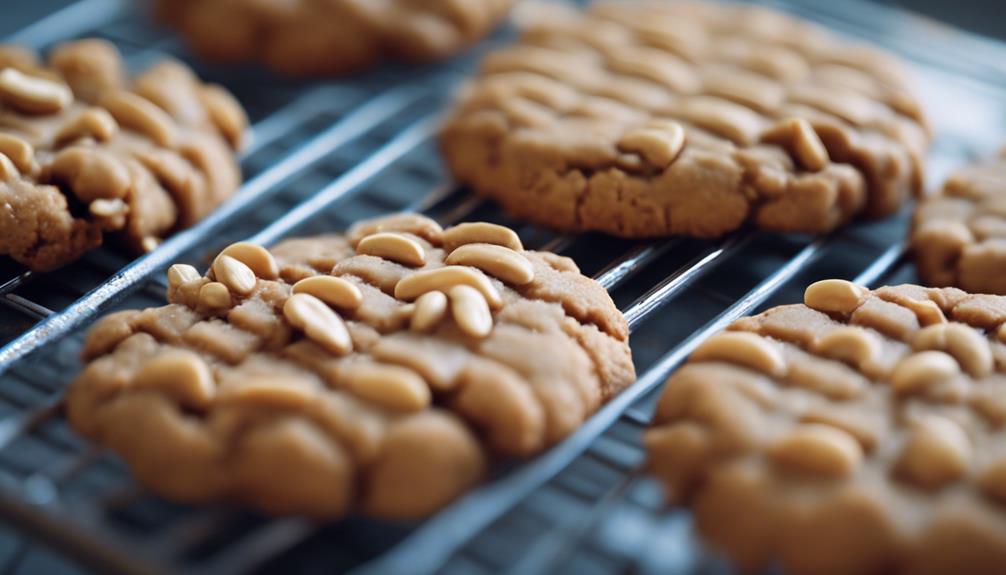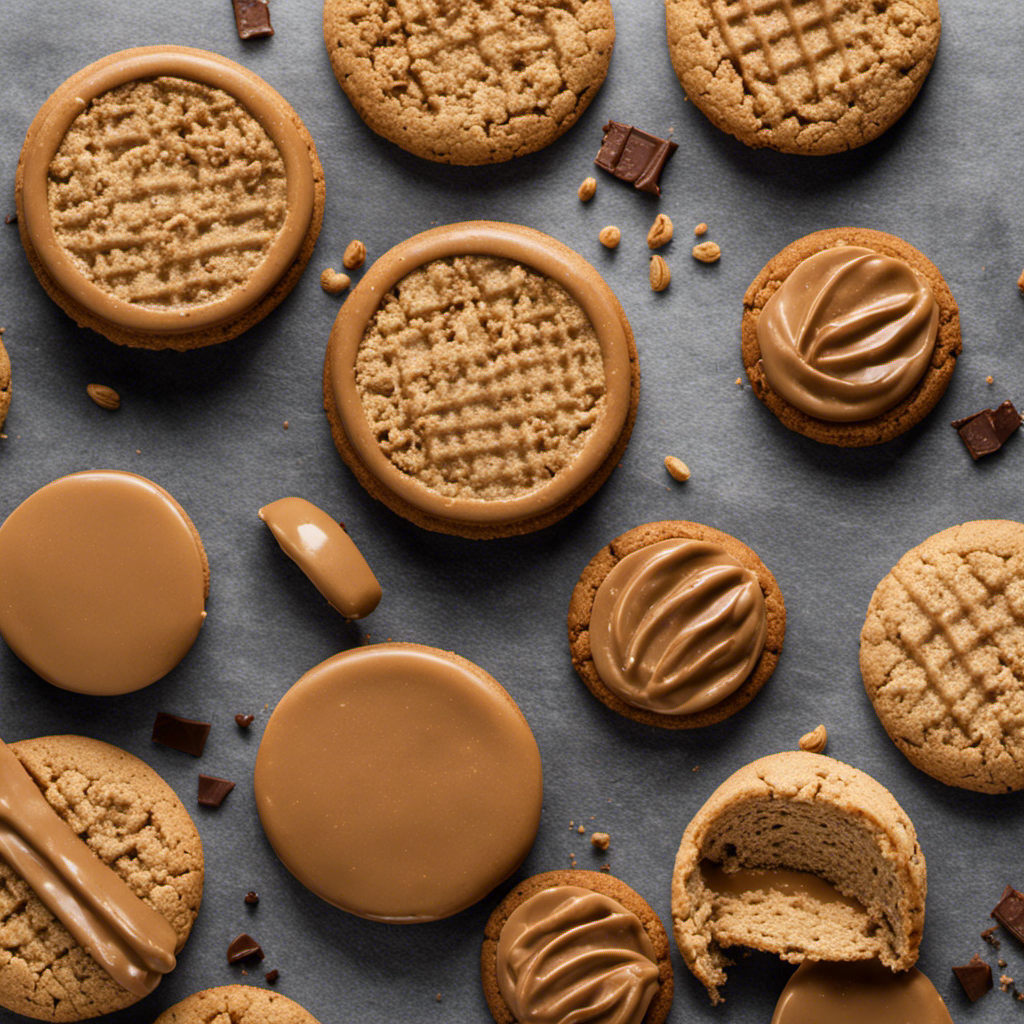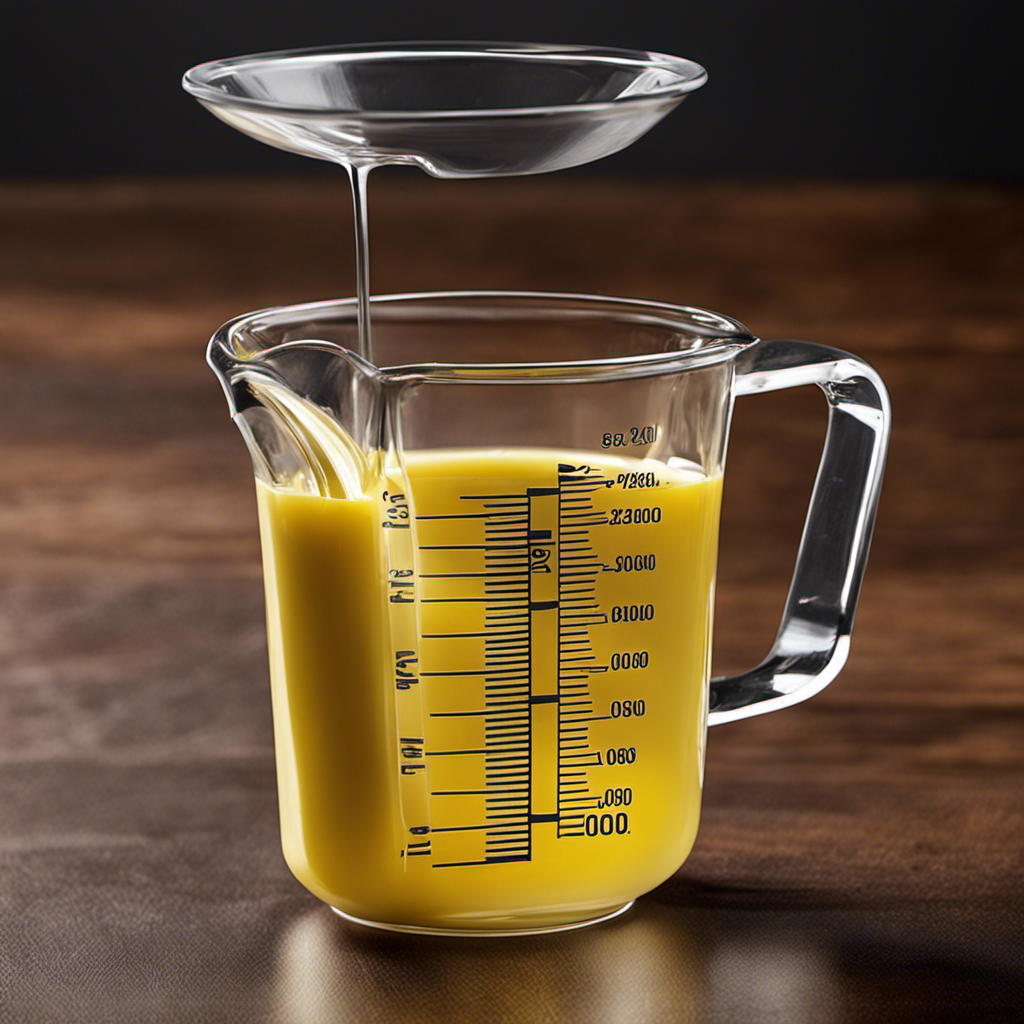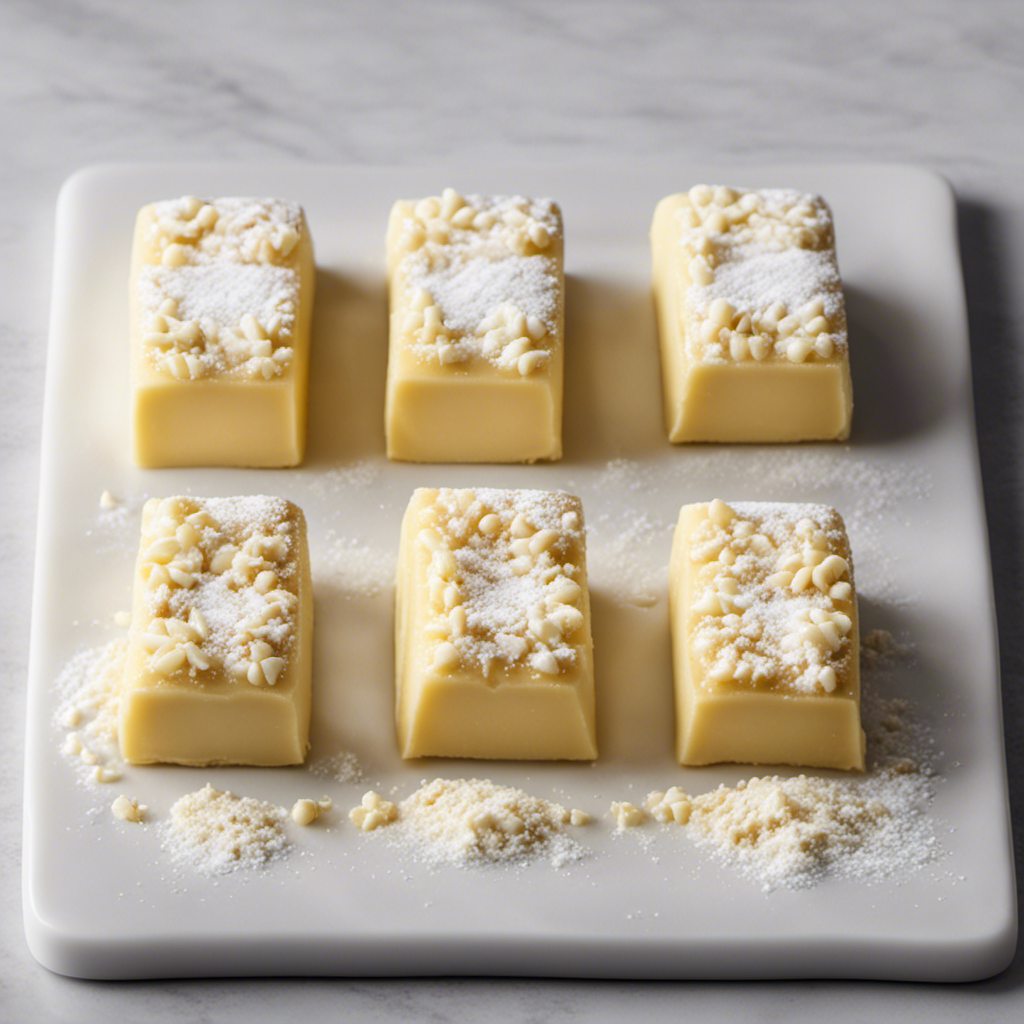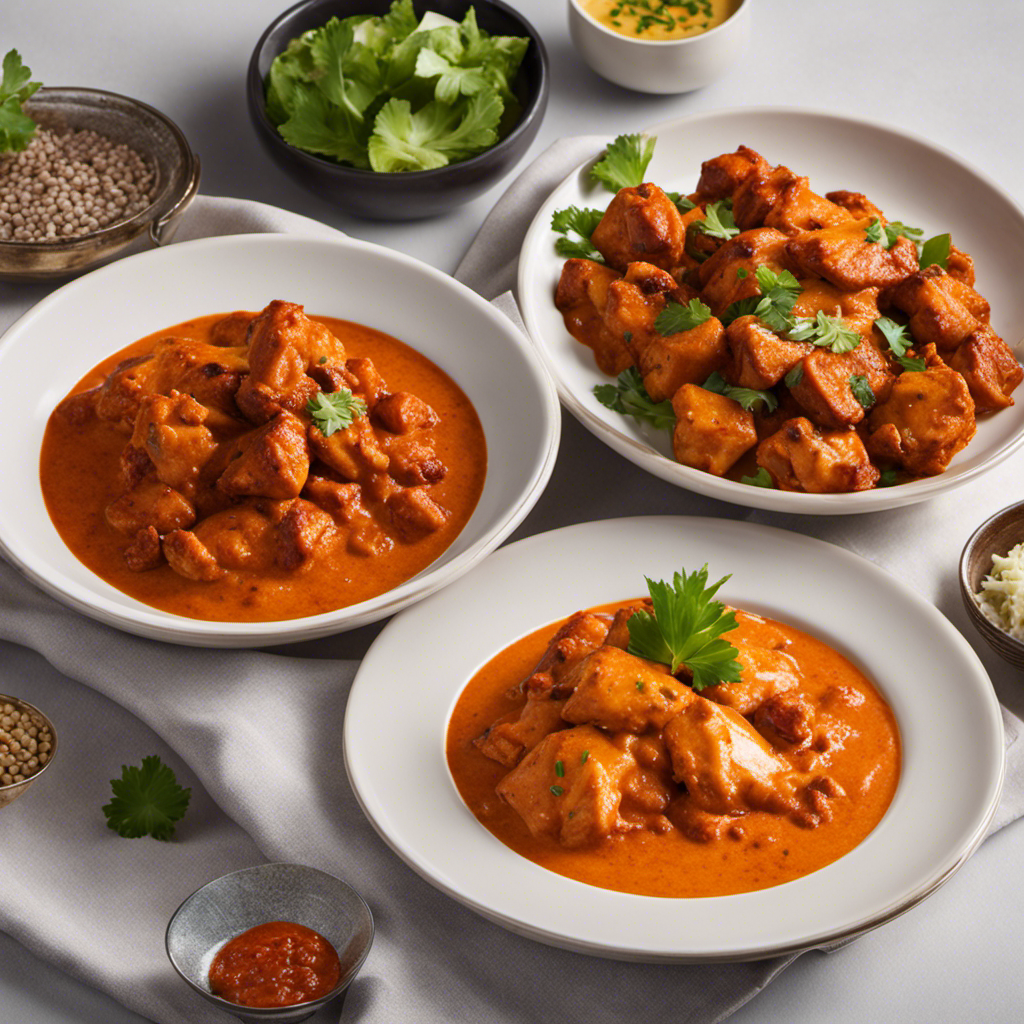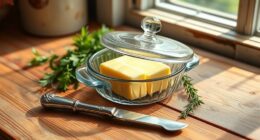Get ready to make the best peanut butter cookies of your life! Use Jiff peanut butter, unsalted butter, light brown sugar, and creamy peanut butter. Cream them together for that perfect texture and rich flavor. Roll into balls, make fork imprints, and bake at 350°F for 8 minutes. Then let them cool to perfection. For variations, try crunchy peanut butter, chocolate chips, or a sprinkle of sea salt. Store in an airtight container and freeze for later. Discover expert tips and soft cookie instructions to take your peanut butter cookie game to the next level.
Key Takeaways
- Use Jiff peanut butter and unsalted butter for optimal texture.
- Creamy peanut butter and light brown sugar for rich flavor.
- Properly measure and sift flour for ideal cookie dough consistency.
- Roll dough into balls, flatten with fork imprints, bake at 350°F for 8 minutes.
- Let cookies cool on baking sheet for perfect texture.
Ingredients for Peanut Butter Cookies
For the best peanut butter cookies, gather flour, baking powder, baking soda, butter, creamy peanut butter, and light brown sugar. When it comes to creating the perfect cookie texture, using high-quality ingredients like Jiff peanut butter and unsalted butter is vital.
The creamy peanut butter not only adds a rich and nutty flavor but also contributes to the cookies' soft and chewy consistency. Light brown sugar plays an essential role in these cookies, providing a hint of caramel-like sweetness that complements the peanut butter perfectly.
To guarantee the ideal texture, make sure to measure and sift the flour properly before incorporating it into the dough. The combination of butter and peanut butter results in a cookie that isn't only flavorful but also incredibly indulgent.
Baking the Perfect Peanut Butter Cookies
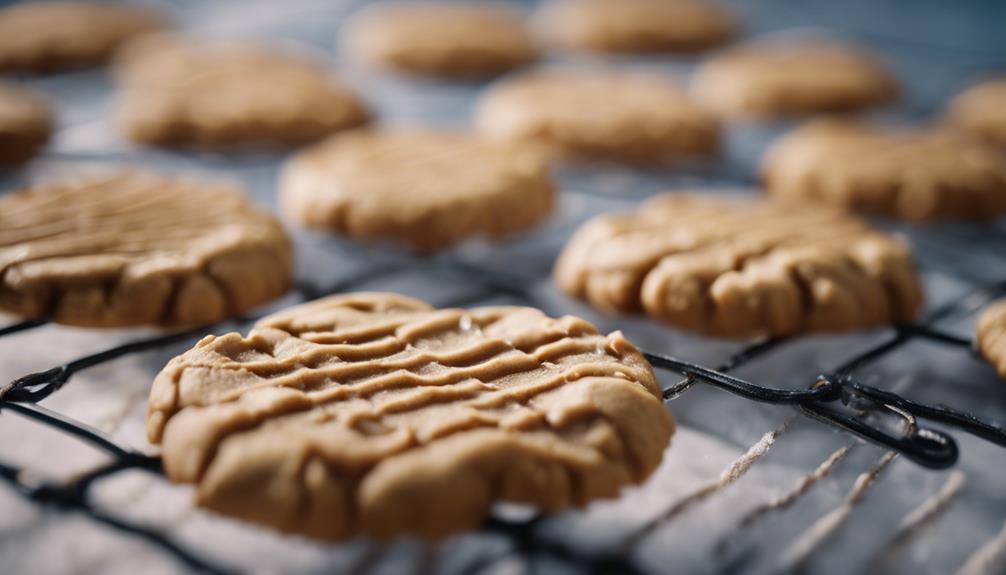
To bake the ideal peanut butter cookies, use smooth peanut butter and a combination of brown and white sugar for the best sweetness and texture. Properly measuring the flour is essential to prevent the cookies from becoming too dense. Rolling the dough into balls, flattening them with fork imprints, and baking at 350°F for 8 minutes yields perfect cookies. Remember to let the cookies cool completely on the baking sheet before transferring them to guarantee they set and develop the right texture.
| Ingredient | Amount |
|---|---|
| Smooth Peanut Butter | 1 cup |
| Brown Sugar | ½ cup |
| White Sugar | ½ cup |
| Flour | 1 ¼ cups |
Expert Tips for Peanut Butter Cookies

Consider incorporating a touch of cinnamon or a sprinkle of sea salt to enhance the flavor profile of your peanut butter cookies. When making these delicious treats, keep in mind these expert tips:
- Opt for creamy peanut butter for the best texture.
- Experiment with light and dark brown sugar for varying tastes.
- Make certain to properly measure flour to get the right cookie consistency.
To guarantee your cookies turn out just right, remember to let them cool on the baking sheet before transferring. Soft cookies will firm up as they cool, so avoid overbaking for that perfect chewy texture.
Peanut Butter Cookie Variations
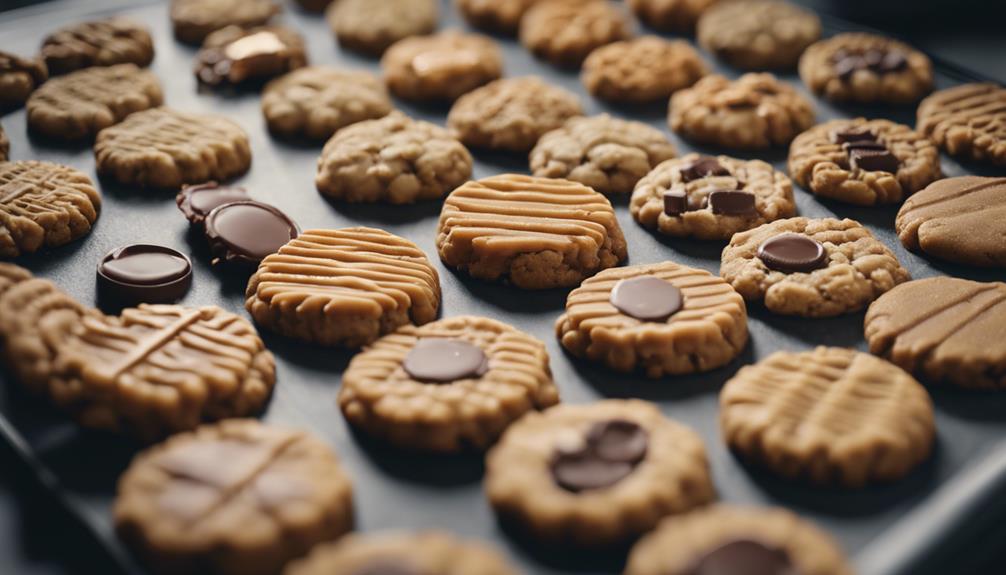
Explore a variety of creative peanut butter cookie variations to elevate your baking repertoire and delight your taste buds.
Enhance your classic peanut butter cookie recipe by incorporating chunky peanut butter or crunchy peanut butter for added texture.
For a burst of flavor, mix in peanut butter chips or chocolate chips into your peanut butter cookie dough.
Experiment with chopped peanuts for a delightful crunch or add a swirl of jelly for a playful twist on the traditional cookie.
Consider incorporating oats, raisins, or coconut to introduce new dimensions to the peanut butter flavor profile.
For a sweet and salty contrast, sprinkle a bit of sea salt on top before baking.
These peanut butter cookie variations will take your baking skills to the next level and impress anyone who tries your delectable creations.
Storage and Freezing Tips
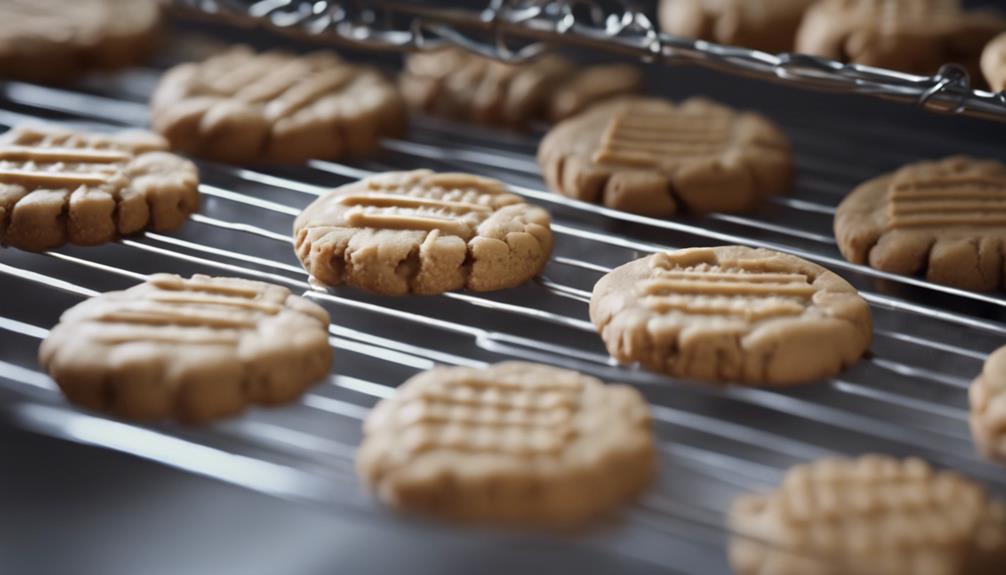
Store your freshly baked peanut butter cookies in an airtight container at room temperature for optimal freshness, lasting up to a week.
When it comes to storing and freezing your delightful treats, keep these tips in mind:
- For extended storage, freeze the cookies in a freezer-safe container or bag.
- Defrost frozen cookies at room temperature before serving to preserve their texture.
- Freeze cookie dough balls for convenient baking, remembering to adjust the bake time as necessary.
To prevent adherence and preserve the cookies' shape during freezing, layer them with parchment or wax paper. This simple step guarantees that your cookies remain intact and are easy to separate when you're prepared to enjoy them.
Soft Peanut Butter Cookies Instructions
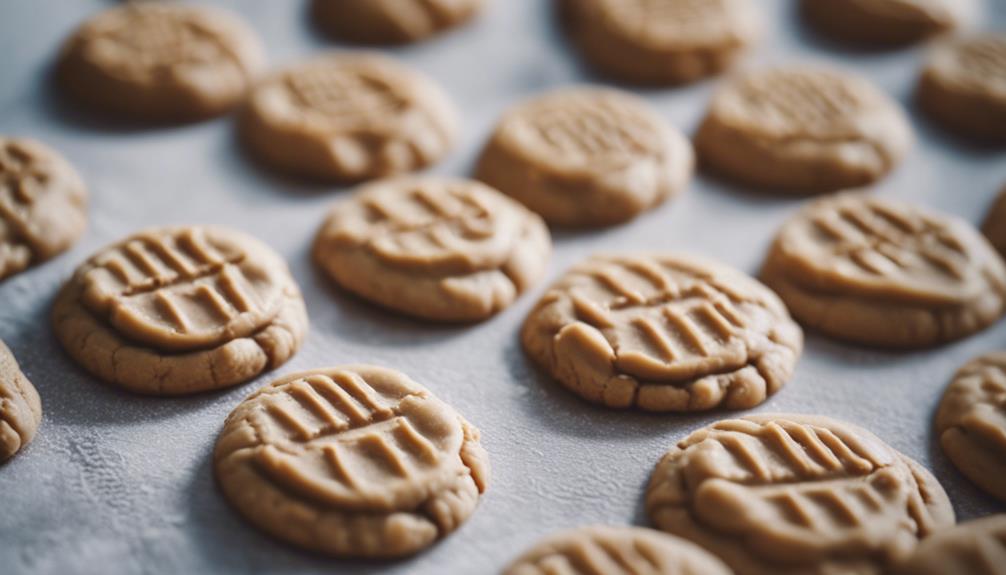
To make soft peanut butter cookies, start by creaming together 1/2 cup of butter, 1/2 cup of brown sugar, and 1/2 cup of peanut butter for the cookie base. Gradually add 1 and 1/4 cups of all-purpose flour mixed with 1/2 teaspoon of baking powder and 1/2 teaspoon of baking soda to the wet mixture until well combined.
Shape the dough into small balls, roll them in granulated sugar, and flatten each ball with a fork to create a classic crisscross pattern.
Preheat your oven to 350F (175C) and bake the cookies for about 10-12 minutes, or until the edges start turning a light golden brown. Once baked, remove the cookies from the oven and allow them to cool on a wire rack.
This cooling process helps to set the cookies and achieve that soft, chewy texture that peanut butter cookie lovers adore. Enjoy your delicious homemade soft peanut butter cookies!
User Engagement and Feedback
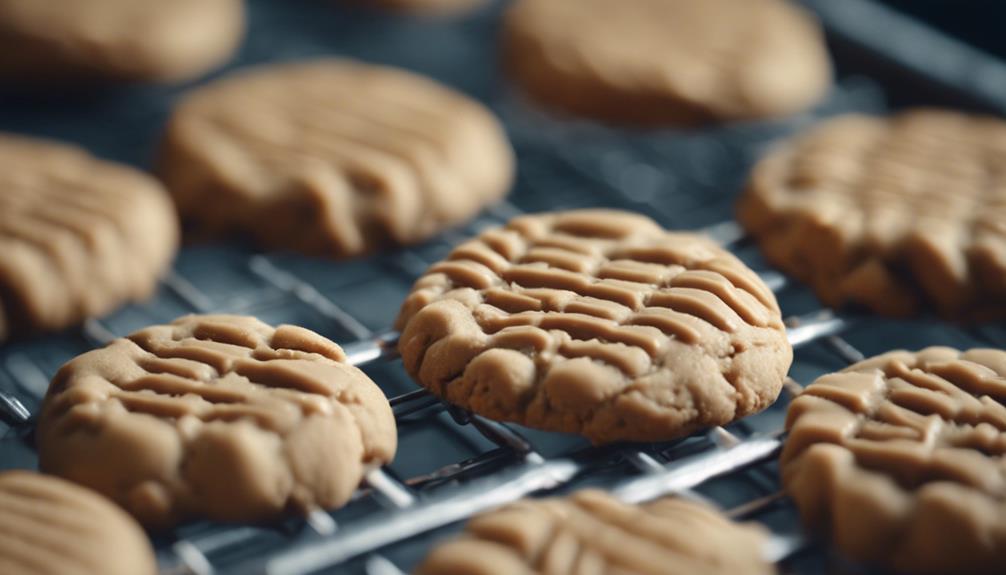
You can discover valuable insights by checking out user ratings and reviews of the peanut butter cookies recipe.
Reading feedback from others who've tried the recipe can help you decide if it's worth making.
User comments often provide tips for modifications that could enhance your baking experience.
User Ratings
User engagement and feedback play a crucial role in shaping the overall experience of the peanut butter cookies recipe on the platform. When it comes to user ratings, your input matters significantly in determining the recipe's credibility and popularity.
Here's what you need to know:
- Rate the Recipe: Don't forget to rate the peanut butter cookies recipe on a scale of 1 to 5 stars based on your experience.
- Leave Comments: Share your thoughts and suggestions by leaving comments to help others in the recipe community.
- Engage with Others: Interact with fellow users by reading and responding to reviews, creating a dynamic and engaging environment.
Your ratings and reviews not only impact the recipe's overall rating but also contribute to its credibility. So, take a moment to engage, rate, and share your feedback to enhance the peanut butter cookies experience for everyone!
Recipe Modifications
Consider exploring various recipe modifications suggested by users to enhance your peanut butter cookies experience and cater to different preferences. User ratings and community feedback can provide valuable insights into adjusting sugar levels, incorporating mix-ins like chocolate chips or nuts, or experimenting with various types of peanut butter.
By engaging with user suggestions, you have the opportunity to create recipe variations that resonate with a broader audience and allow for customization based on individual tastes. Additionally, incorporating user feedback fosters a collaborative environment where the recipe can evolve and improve over time.
Embracing recipe modifications not only enhances the quality of your peanut butter cookies but also encourages a sense of community among individuals sharing their experiences. So, don't hesitate to try out new ideas and adapt the recipe to suit your preferences and those of fellow cookie enthusiasts.
Frequently Asked Questions
What Brand of Peanut Butter Makes the Best Peanut Butter Cookies?
For the best peanut butter cookies, go with creamy Jif or smooth, salted peanut butter. Experimenting with different brands can lead to varied tastes and textures. Remember, natural peanut butter needs a good mix before adding.
What Is the Secret to a Perfect Cookie?
To bake perfect cookies, you must use high-quality ingredients and measure them accurately. Pay attention to baking time and temperature for the ideal texture. Allow them to cool properly before storing in an airtight container for freshness.
What Are the Top 3 Cookies?
For the top 3 cookies, you've got classic chocolate chip, indulgent double chocolate, and beloved peanut butter. Each offers delicious flavors and textures. You can customize with nuts, chocolate chips, or more. Enjoy baking!
What Is the Most Successful Cookie?
When it comes to the most successful cookie, many enjoy classic chocolate chip cookies for their perfect balance of sweetness. Peanut butter cookies are also a top choice, loved for their rich flavor and chewy texture.
Conclusion
So there you have it, the best peanut butter cookies you'll ever make! These cookies are guaranteed to make your taste buds do a happy dance with every bite.
So go ahead, whip up a batch of these irresistible treats and watch as they disappear in record time. Trust me, you won't be able to resist their deliciously addictive flavor!
